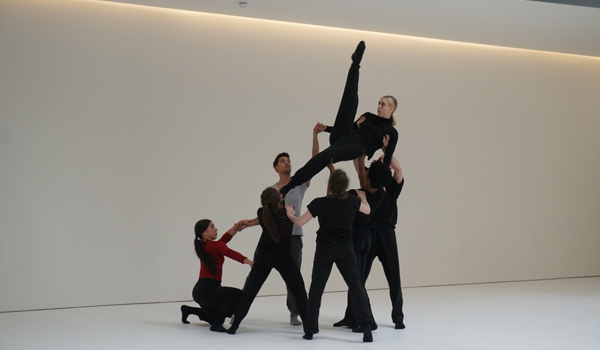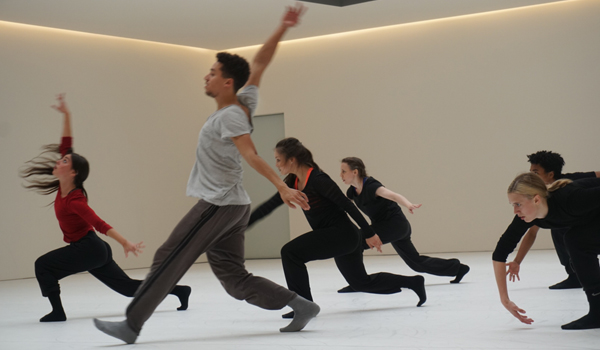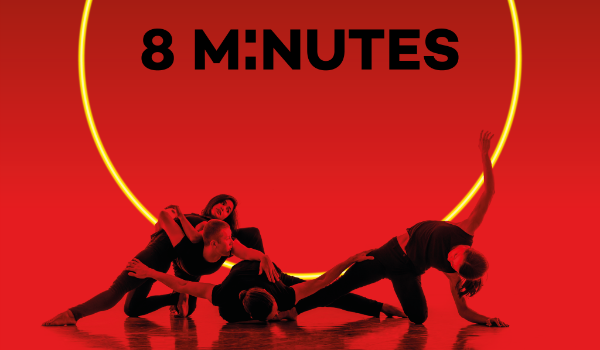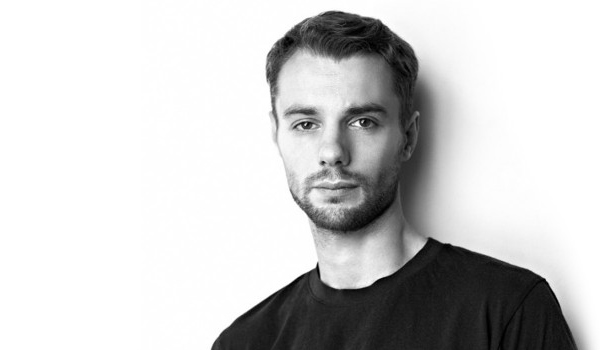Alexander Whitley is a choreographer living and working in London. He has created work for several of the UK’s leading companies including the Royal Ballet, Rambert, Balletboyz and Birmingham Royal Ballet. He is a New Wave Associate artist at Sadler’s Wells theatre and his company, Alexander Whitley Dance Company, is an associate of Rambert. For his choreographic work he was shortlisted for the 2012 Arts Foundation fellowship and was nominated as a Breakthrough Artist in the 2014 Sky Arts Southbank Awards.
For his new work, 8 Minutes, Alexander and collaborators will create a striking, immersive environment of dance, music and film to illuminate our relationship with the sun.
Eli Goldstone: Hi Alex, your upcoming project 8 Minutes takes space as its theme. When and how did you come to be inspired by space exploration?
Alexander Whitley: I’ve been interested in science for as long as I can remember – certainly since studying it at school – and enjoy reading popular science books in my spare time. I tend to think quite abstractly and systematically about choreography so have found a lot of inspiration for my work from the explanations of the natural world that science provides.
It was actually the Rutherford Appleton Laboratory, the space science facility that I’ve been working in partnership with, that initiated this project and when I was approached to take it on I jumped at the chance. I’m not sure I would have been bold enough to take on a subject as big as the sun without being prompted to, but the prospect of getting to work with scientists to develop a deeper understanding of the subject was too exciting to miss. It’s been a fascinating journey of discovery to delve deeper into a subject I’ve had a casual interest in for a long time and have my mind continually blown by the epic forces at work in our universe as well as the human ingenuity behind our understanding of it.
Eli: What are the parallels between dance and solar science?
Alexander: Well if you consider that physics is essentially the study of motion, there is a very fundamental parallel with dance! The physicists and the choreographer both ask questions about how things move and offer interpretations of the world based on their understanding of it. There are obvious differences in the motivations and outcomes of these enquiries but the processes we go through to produce our work as artists and scientists are actually strikingly similar. There’s been a lot of research, testing of ideas and critical feedback involved in making this piece. It’s been really exciting to take principles of motion from our understanding of the sun, apply to the human body and see the effect it produces. I’ve learnt quite a lot about dance in the process.

Photograph: 8 Minutes in rehearsal
Eli: 8 Minutes is a collaborative work. Tell us about the other artists you have been working with to devise the show.
Alexander: Yes, I’ve got a great team of collaborating artists. Tal Rosner, the video artist, is creating visuals to accompany the choreography using some of the most cutting edge imagery and data from solar-science research. So much of our understanding of the sun comes from being able to look at it through different wavelengths of light and the imagery produced in the process is absolutely stunning. The music is being made by American composer Daniel Wohl. His electro-acoustic sound is perfectly suited to the subject matter and he also happens to be a big fan of space-science too. He’s been working closely with me and Tal to shape a score around the various themes we’re exploring. It’s going to be an audio-visual feast!

Photograph: 8 Minutes in rehearsal
Eli: You’ve investigated other sciences, in particular technology and philosophy, with your work – is it important to you to bridge the gap between dance and other art forms by forming a dialogue with other disciplines?
Alexander: Yes, this is hugely important to me. Dance has traditionally been an art form that draws together many artistic disciplines, relying on music, costumes, set design and lighting, for example, making it a very collaborative discipline. I love that I get to work with people doing really interesting things in other areas and have the opportunity to learn about and take inspiration from them. Advances in technology such as motion-tracking are drawing digital artists and technologists towards dance because it is a rich source of information for the systems they are developing. I think it’s necessary for choreographers to understand the implications of these developments and the new creative possibilities it is opening up. I’m also fascinated by the work of philosophers and neuroscientists in understanding the importance of movement in cognition and communication, which helps me to understand more about the processes inherent in the work I do. I’m a firm believer in forming dialogues across disciplines, both as a way of enriching dance with new ideas and of drawing people in to better understanding what it’s about.
Eli: In a parallel universe, can you imagine yourself in the world of science rather than dance? Is there a particular branch of science that speaks to you?
Alexander: Yes, I think I could! Although it would have to be something that involved a lot of practical fieldwork rather than being in a lab – maybe a climate scientist exploring the arctic! I’m too fidgety to be watching mould grow in a petri dish… I sometimes wish I was born a few hundred years ago when you could be a philosopher, a scientist and an artist all at once. I’d probably find it difficult to narrow my horizons to one specialism in the way you tend to have to as a scientist these days. It’s why I enjoying doing what I do so much because I can draw information from a whole range of disciplines and create art from it.
Eli: What excites you about the future of contemporary dance?
Alexander: I’m excited by the fact that there seems to be a widening appreciation of dance from other fields and a blurring of lines between disciplines related to movement. The growing presence of performance in gallery spaces is bringing a new type of conversation to dance, as is the increased interest from design and architectural schools of thinking. It’s also exciting that new dance spaces and venues are being developed, such as Studio Wayne McGregor and the new Sadler’s Wells theatre in Stratford which opens in a few years’ time. It feels like a very fertile time to be involved in contemporary dance with ideas informing it from many different directions and more people coming to appreciate what it has to offer as an art form and as a basis for enquiry.
alexanderwhitley.com
8 Minutes
Sadler’s Wells
27-28 June
Tickets and more info: sadlerswells.com
All tickets £20

